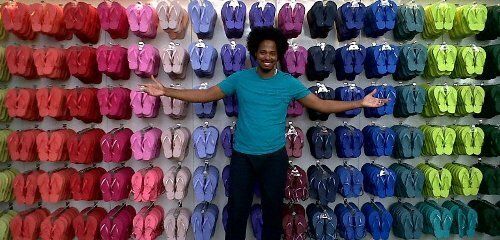There is little doubt that the current financial recession affecting so many parts of the world has contributed to a major shift in the global creative landscapes and fashion consumption habits. The leading roles played by North-American and European economies has, over the last four years, slowly been replaced by hitherto secondary characters performed by nations such as Brazil, China, India and Russia, where the emergence of relatively stable economies has allowed for the establishment of a new world order. Slowly, countries such as Italy, France or the United States have lost their key positions as leaders in the fashion and textile and footwear production arenas, having lost their reputation as qualitative producers to be seen mostly as quantitative consumers.
In the context of this sartorial Farewell Symphony (as envisaged by Joseph Haydn in his musical metaphor to illustrate a waning creative cadence) the world has witnessed the slowly fading of the melodies played by European and North-American nations as France, Italy, and the US perform their last notes and depart from the fashion stage. However, it is unquestionable that the players who have remained on stage have managed to play a louder and more enchanting tune. In such a cluster of performers, Brazil has, over the last decade, garnered an important position as a manufacturing centre for textiles, leathers and other materials essential for the production of garments, shoes and accessories.
Despite the existence of accomplished fashion and footwear labels such as Osklen, Rosa Chá, Pedro Lourenço, and Alexandre Herchcovitch that have successfully muscled their way into international markets, Brazilian fashion has mostly been renowned for producing casual footwear (with brands such as Havaianas, Ipanema and Melissa leading the way), making sexy swimwear for both men and women, and for the outstanding beauty gene that has given models such as Giselle Bündchen or Isabeli Fontana to the world. In spite of this success, on closer inspection, Brazilian fashion and footwear producers have lacked behind their counterparts in many countries when it comes to design innovation, preferring instead to remain avid followers of European and American creativity and trends. However, significant investment in this area over the last decade is now bearing fruits in the form of strong international design platforms created to support manufacturers by stressing the importance of adding a creative dimension to industrial raw potential when exhibiting and selling Brazilian materials and finished products to the world.

One of the creative platforms that Brazil manufacturers have developed to break into international fashion markets is Inspiramais, a dynamic project supported by Assintecal that culminates in two annual fairs that showcase innovative designs and technologies in footwear and leather production. Created in 1984 as an association to bring together Brazilian manufacturers of leather and footwear components, Assintecal decided to invest in the creative dimension of footwear manufacturing by developing Inspiramais. The need to do so was triggered by a massive drop in sales of Brazilian footwear in 1998 and 1999, as a consequence of China having secured powerful contracts with clients that had normally favoured Brazil.
Unlike what can be witnessed in Europe or North-America, until recently most Brazilian manufacturers of textiles and footwear components did not seem to understand the need to develop design teams or invest in teaching business skills to their managers, and this is where consulting platforms such as Inspiramais have started providing a useful formative service. The investment in design and creativity has been a clever one to make Brazil more competitive against countries such as India, Turkey and China, where production of the majority of garments, accessories and footwear for European and American markets takes place.
Led by established fashion designer Walter Rodrigues, the team at Inspiramais has developed tremendous support structures by providing research and development input to Brazilian manufacturers with the intention to generate profitable output. This process is anchored on an appreciation of national sources of inspiration such as indigenous motifs and tropical colours and patterns as Brazil's unique selling point to the world of design. Today, the decade-old Inspiramais has become a renowned creative platform and forum that celebrates excellence in Brazilian design and innovation. The initiative's conventions organised biannually in São Paulo now gather over 100 industry participants that adhere to the projects ideas and showcase their practical applications to thousands of visitors.
Despite its very positive dimension, a visit to one of the Inspiramais conventions is not without its surprises for visitors from countries with strong traditions of allying design to production, mostly owing to the pervasive lack of programming and planning across Brazilian industry. However, Inspiramais's investigative and creative position is not only noble but an essential one that should serve as an inspiration to the world. Anyone who attends one of Inspiramais's events is able to confirm Brazil's ambition to develop its role as a contemporary fashion powerhouse when it comes to creative design. In addition to booths where manufacturers show their new products, the exhibition includes workshops by designers and seminars and lectures by influential Brazilian and international speakers on relevant topics such as sustainability or the importance of creative economies.
Without a doubt, the investment in the invaluable knowledge developed and provided by Rodrigues's team will contribute to the creation of a new generation of educated managers and employees across Brazilian industries responsible for the production of textiles and footwear components. For Europeans and Americans, this is not only an interesting model, but one that should be investigated for its benefits in driving global creative industries towards excellence. In many ways, orchestrating a symphony where diverse creative and manufacturing industries play equally important instruments may ultimately keep the players of the global fashion melody performing in tune for a long time to come.